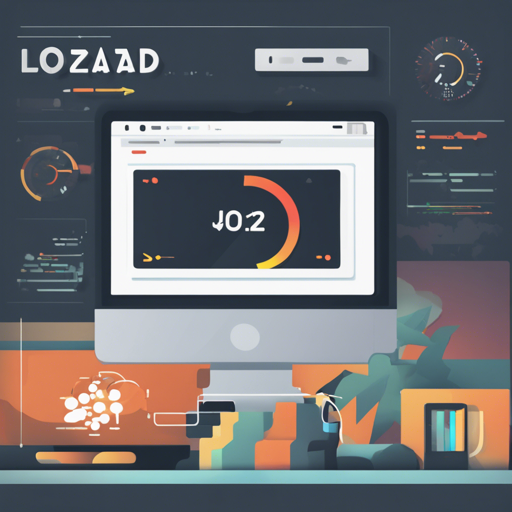Lazy loading is a crucial technique in web development, allowing you to delay the loading of images, iframes, and other resources until they’re needed. In this article, we’ll explore how to use the highly performant and lightweight library, Lozad.js, to implement lazy loading in pure JavaScript. Leveraging the power of the IntersectionObserver API, Lozad.js can make your website faster and more responsive. Let’s dive in!
What is Lozad.js?
Lozad.js is a minimalist library that provides efficient lazy loading without any dependencies. With its simple interface, you can implement lazy loading for images, iframes, ads, videos, and more. This library ensures your website loads faster, which can enhance the user experience significantly.
Installation
You can easily install Lozad.js using either npm or Yarn. Here are the steps:
- Using npm:
$ npm install --save lozad - Using Yarn:
$ yarn add lozad - Using Bower:
$ bower install lozad
Alternatively, you can load it via CDN:
<script type="text/javascript" src="https://cdn.jsdelivr.net/npm/lozad/dist/lozad.min.js"></script>Usage
To start using Lozad.js, follow these simple steps:
- In your HTML, add the class
lozadto the image or element you want to lazy load: - Initialize Lozad in JavaScript:
<img class="lozad" data-src="image.png">const observer = lozad(); // lazy loads elements with default selector as .lozad
observer.observe();How It Works: An Analogy
Imagine you’re hosting a dinner party. You have a grand dining table (your webpage) and a delicious buffet (the images and resources). Instead of having all the dishes upfront, you choose to bring out one dish at a time as guests request them – this keeps your table clean and the food fresh, just like how Lozad.js only loads elements when they’re about to enter the viewing area (viewport) of your webpage.
Example Usage with the Picture Tag
To use Lozad.js with the `
<picture class="lozad" style="display: block; min-height: 1rem" data-iesrc="image_thumbs04.jpg">
<source srcset="image_thumbs04.jpg" media="(min-width: 1280px)">
<source srcset="image_thumbs05.jpg" media="(min-width: 980px)">
<source srcset="image_thumbs06.jpg" media="(min-width: 320px)">
<!-- Fallback in case JS is disabled -->
<img src="image_thumbs04.jpg" alt="noscript">
</picture>Troubleshooting
If you encounter issues while using Lozad.js, consider the following:
- Ensure you have included the Lozad.js script correctly in your HTML.
- Check that the class name for your lazy-loaded elements is set to
lozad. - Confirm that the attribute
data-srcis correctly defined with the image URL. - For older browsers that do not support Intersection Observer, consider using a polyfill available here.
For more insights, updates, or to collaborate on AI development projects, stay connected with fxis.ai.
Conclusion
Lozad.js is a powerful tool for improving the performance of your web applications through lazy loading. It stands as a testament to how efficient coding practices can help create faster, more accessible websites.
At fxis.ai, we believe that such advancements are crucial for the future of AI, as they enable more comprehensive and effective solutions. Our team is continually exploring new methodologies to push the envelope in artificial intelligence, ensuring that our clients benefit from the latest technological innovations.
Further Resources
For more detailed information, you can visit:

